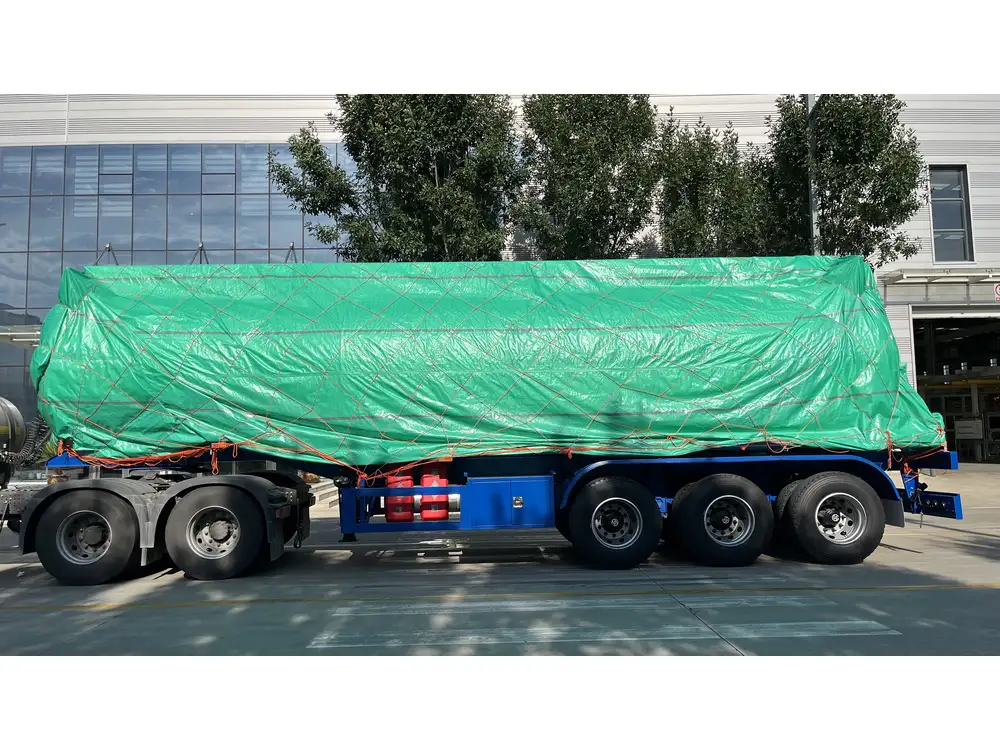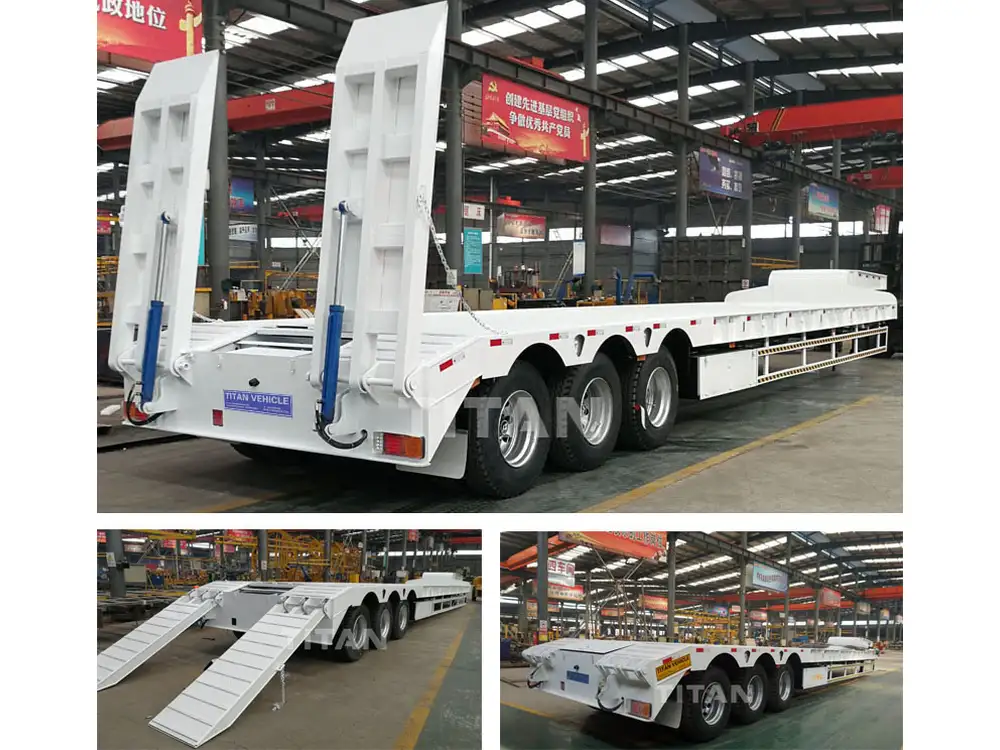In the realm of transportation, trailers serve as pivotal components in facilitating the movement of goods across extensive distances. Among the various elements that contribute to the efficacy of a semi-trailer, the trailer tail stands out as an ingenious innovation aimed at enhancing aerodynamics, fuel efficiency, and overall performance. This detailed guide delves into the intricacies of trailer tails, their benefits, ideal applications, and why they are becoming indispensable in modern trucking operations.
What Is a Trailer Tail?
A trailer tail, often referred to as an aerodynamic tail or rear fairing, is an extension affixed to the back of a semi-trailer. Designed to minimize drag, it plays a crucial role in improving the aerodynamics of the vehicle. The fundamental principle behind a trailer tail revolves around streamlining airflow, thereby reducing the turbulent wake created by the trailer as it moves forward.
Construction and Features
Material Composition: Trailer tails are typically constructed from lightweight yet durable materials such as ABS plastic or composites. This enables them to withstand harsh weather conditions while contributing minimally to the overall weight of the trailer.
Design Variations: There are various designs available, including:
- Retractable Tails: These can be deployed when needed and retracted while not in use, maintaining versatility.
- Fixed Tails: Permanently installed, these offer consistent aerodynamic benefits.
| Type of Trailer Tail | Features | Benefits |
|---|---|---|
| Retractable | Can be adjusted based on load or conditions | Flexibility in usage |
| Fixed | Permanent fixture on the trailer | Consistent drag reduction |

The Aerodynamic Advantage of Trailer Tails
When it comes to improving fuel efficiency and reducing operational costs, understanding the aerodynamic principles at play is crucial. A significant amount of fuel consumption in long-haul trucking is attributed to air resistance, especially at highway speeds.
Mechanics of Drag Reduction
The introduction of a trailer tail alters the airflow pattern around the vehicle, minimizing the drag coefficient. Here’s how it works:
- Streamlined Design: By tapering the edge of the trailer, the tail allows air to flow smoothly off the rear, reducing turbulence.
- Wake Reduction: The turbulent wake generated by the trailer can create a “suction” effect that pulls additional energy from the vehicle. A well-designed trailer tail effectively minimizes this wake.
Potential Fuel Savings
- Impact on Fuel Efficiency: Studies indicate that employing a trailer tail can lead to fuel savings of 5% to 15% depending on speed, load, and the specific design of the tail.
- Long-Term Financial Benefits: For a fleet of trucks, this can equate to substantial cost reductions over time.

Practical Applications: Who Benefits from Trailer Tails?
1. Long-Distance Haulers
Long-distance haulers, operating at higher speeds, are the primary beneficiaries of trailer tails. The consistent drag reduction translates to enhanced fuel efficiency, making these vehicles more cost-effective for extensive routes.
2. Freight Companies
Freight companies aiming for sustainability and efficiency can leverage trailer tails to achieve dual goals: reducing operational costs and minimizing their carbon footprint.

3. Owner-Operators
Independent truck drivers can also gain significant savings by installing trailer tails on their rigs. This not only helps with fuel costs but also presents an environmental-conscious image to clients.
Regulatory and Compliance Considerations
As trailer tails gain traction in the trucking industry, understanding the relevant regulations is paramount. Various authorities, including the Federal Motor Carrier Safety Administration (FMCSA) in the United States, have established guidelines regarding the installation and use of aerodynamic devices on trucks.
Key Compliance Factors
- Dimensions: Trailer tails have specific height and width limitations to ensure compliance with road safety regulations.
- Installation Requirements: Proper installation is crucial to ensure that the tails do not obstruct visibility for other drivers or compromise the vehicle’s structural integrity.

Trailer Tail vs. Traditional Aerodynamics: A Comparative Analysis
When juxtaposed with traditional approaches to improving semi-trailer aerodynamics, trailer tails reveal clear advantages.
| Feature | Trailer Tail | Traditional Aerodynamics |
|---|---|---|
| Installation | Easy to install, often retrofittable | Typically built into the trailer design |
| Cost | Generally lower initial investment | Higher costs due to complete redesign |
| Maintenance | Minimal, with easy access for inspections | May require extensive checks and upkeep |
| Flexibility | Can be deployed/removed as needed | Fixed and cannot be adjusted |
Specific Challenges and Solutions
While the benefits of trailer tails are manifold, they are not devoid of challenges.
1. Weight Considerations
Challenge: The weight added by trailer tails can be a concern, especially in regulated environments focusing on load limits.
Solution: Opt for lightweight materials that do not compromise the trailer’s load capacity.

2. Visibility Issues
Challenge: A poorly designed trailer tail can obstruct rear visibility, endangering safety.
Solution: Select designs that emphasize clear visibility, possibly incorporating transparent materials where necessary.
3. Initial Investment Costs
Challenge: The upfront cost of purchasing and installing trailer tails can deter some operators.
Solution: Calculate the potential fuel savings over time to determine the return on investment, often showcasing that the long-term savings far outweigh initial costs.
Optimal Conditions for Use
Understanding the conditions under which trailer tails provide maximum benefits is key to optimizing their effectiveness.

Speed Thresholds
Research suggests that trailer tails are most beneficial at higher speeds, typically above 55 mph. Operators should consider speed averages in their operations to ascertain potential fuel savings.
Cargo Variability
Trailer tails can perform better with certain types of cargo. For example, lighter loads tend to benefit more due to increased speed capabilities, whereas heavier loads may not exhibit as significant fuel savings.
Case Studies: Real-World Examples of Trailer Tails in Action

Fleet Case Study: Green Logistics
A notable fleet, Green Logistics, adopted trailer tails across its fleet of 500 semi-trucks over a period of two years. The results were staggering:
- Fuel Savings: An average of 12% reduction in fuel consumption was recorded.
- Carbon Emissions: A reduction in carbon emissions by over 1,000 tons annually.
Owner-Operator Case Study: Smart Trucking
An independent owner-operator switched to trailer tails and observed:
- Cost Efficiency: A decrease in monthly fuel costs from $3,000 to $2,600, leading to better profit margins.
- Client Perception: Enhanced sustainability efforts attracted eco-conscious clients, resulting in increased business.
Conclusion: The Future of Semi-Trailer Innovation
As the logistics and transportation industry continues to evolve, innovations like trailer tails will play a pivotal role in decoupling efficiency from traditional limitations. With immense potential for cost-saving and environmental impact reduction, these aerodynamic enhancements represent more than just a practical tool—they embody a forward-thinking mindset that prioritizes sustainability, efficiency, and performance.
In an era where operational costs continuously rise, exploring the integration of trailer tails presents a compelling case for semi-trailer manufacturers, operators, and freight companies alike. The benefits are not merely theoretical; they manifest through savings, improved designs, and a more sustainable approach to logistics. Addressing the various challenges, from regulatory compliance to visibility, underscores a commitment to safety and efficiency that will ultimately drive the adoption of trailer tails throughout the industry.
Embracing trailer tails signifies not just an advancement in vehicle design but a necessary stride towards a greener future in transportation, reinforcing our commitment to innovation and responsibility in the trucking sector.



